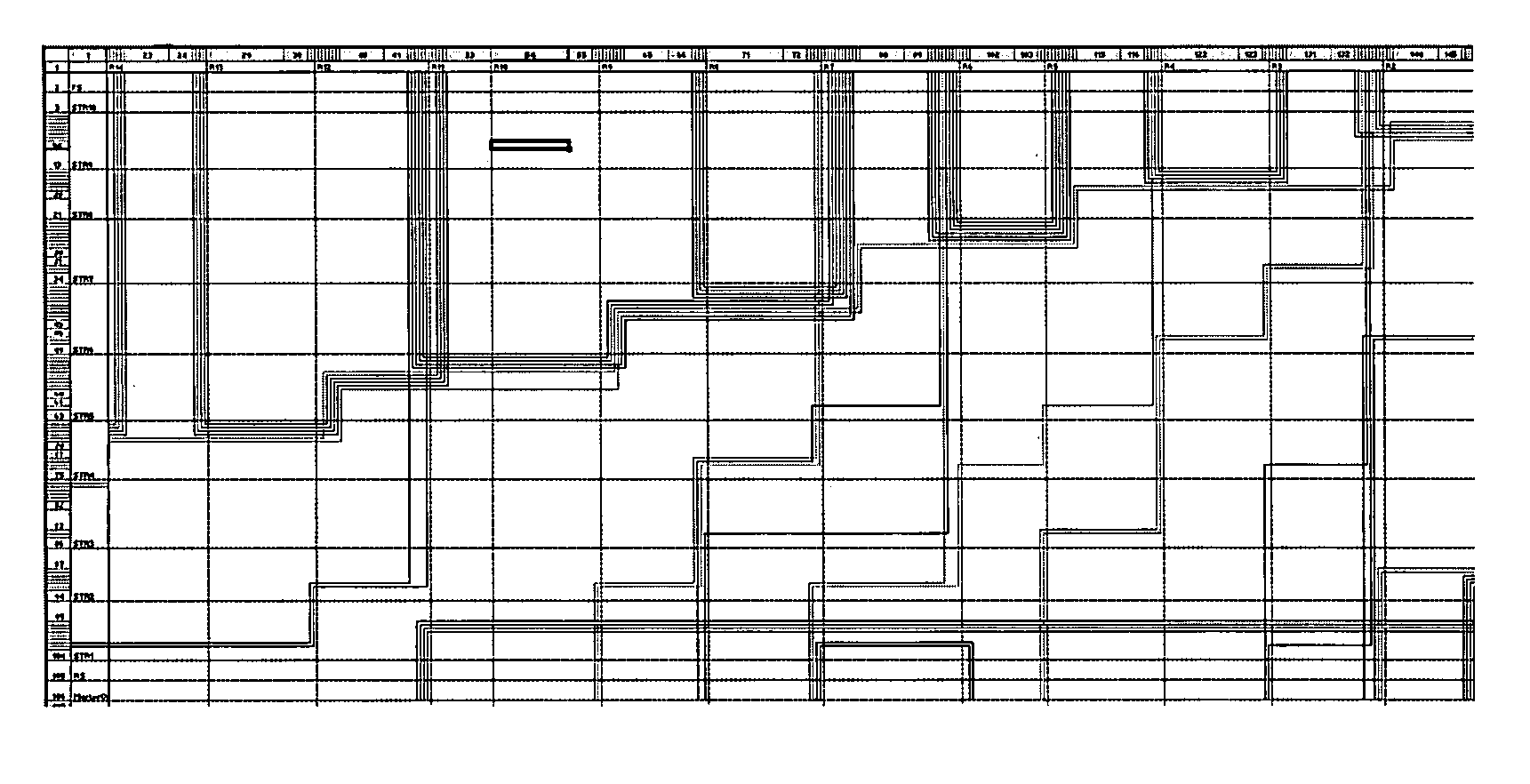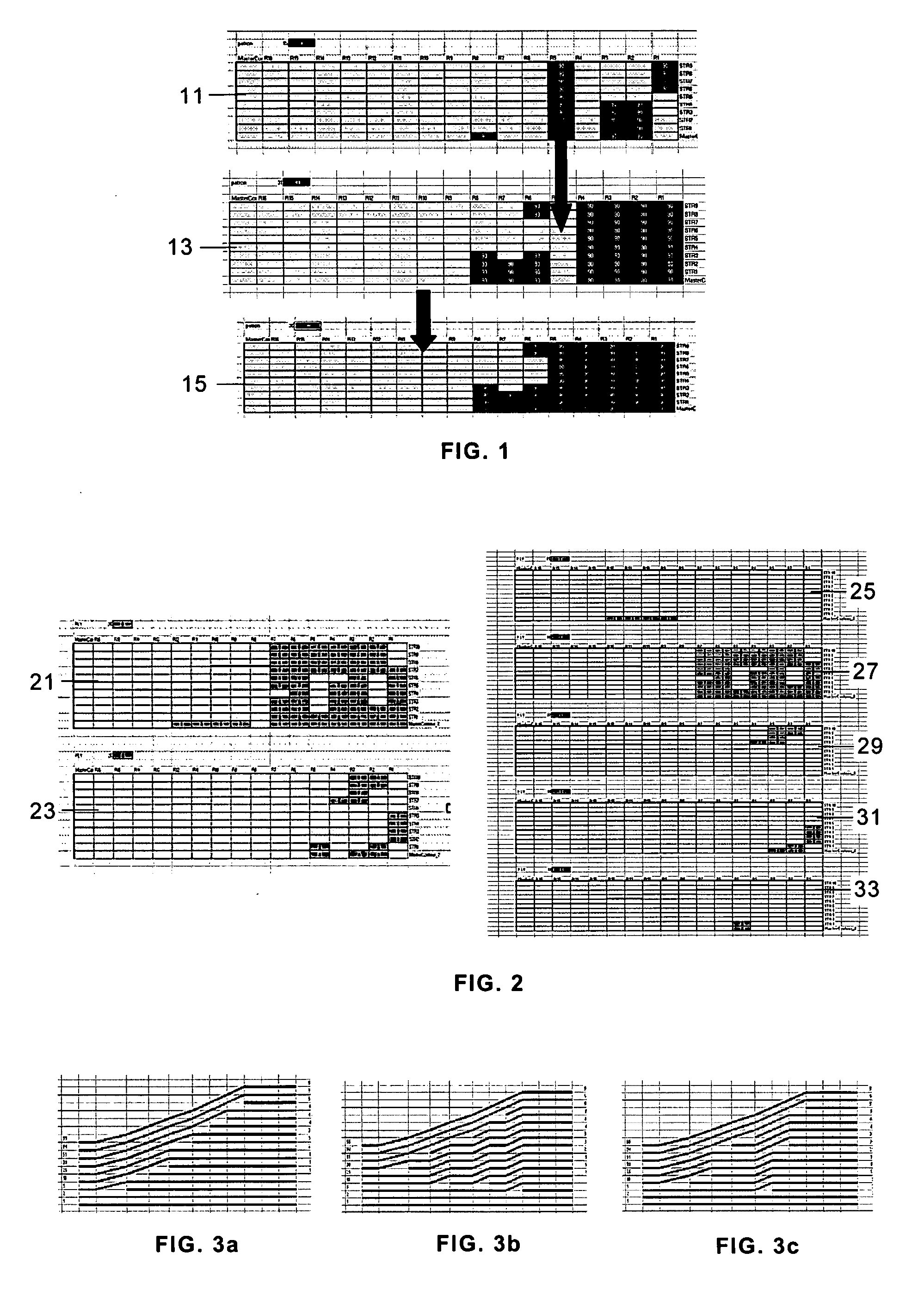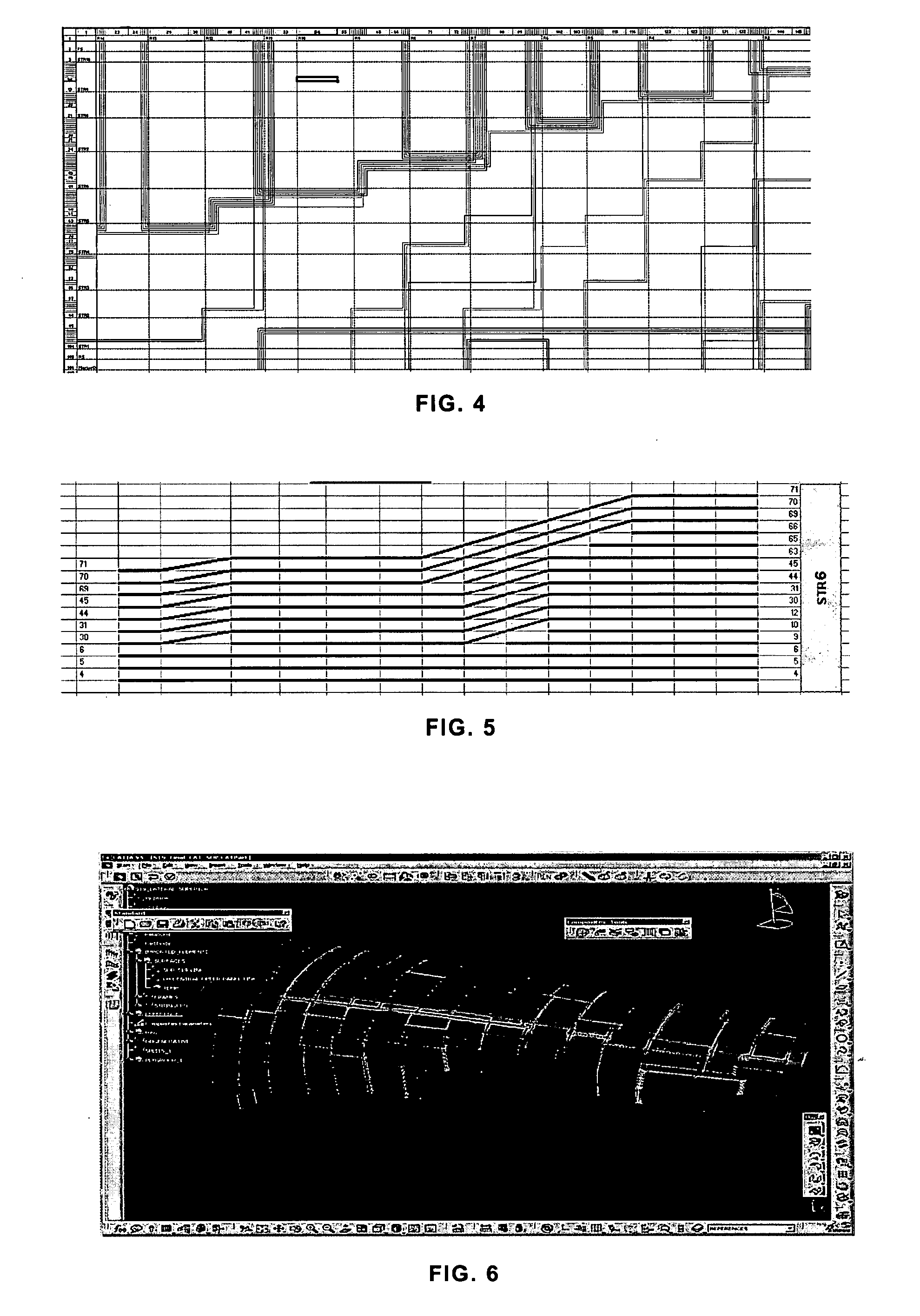Computer-aided method of obtaining a ply model of a composite component
- Summary
- Abstract
- Description
- Claims
- Application Information
AI Technical Summary
Benefits of technology
Problems solved by technology
Method used
Image
Examples
Embodiment Construction
[0026] We will now describe an embodiment of this invention for obtaining a preliminary CAD ply model for a HTP skin of an aircraft using Visual Basic as programming language and showing the results in Excel worksheets.
[0027] In step a) the stacking sequence is obtained from ARPA, a stress program used to calculate skins behaviour under certain load conditions. The output file obtained from ARPA is a file containing, among other data, the stacking sequence for each panel, defined in this case by stringers and ribs as illustrated in the following Table 1.
TABLE 1Stacking Sequence (Orientation &Panel No.Stringer Id.Rib Id.Material)1STR1R01(45 / −45 / 90 / 0 / 90 / −45 / 45)2STR2R01(45 / −45 / 90 / 0 / 90 / −45 / 45 / 90)3STR3R01(45 / −45 / 90 / 0 / 90 / −45 / 45 / 90 / 45). . .. . .. . .. . .
[0028] In step b) the ARPA file is processed to obtain a stacking table containing, among other data, the data schematically shown in the following table
[0029] In step c) the ARPA file is processed to obtain a grid table containing th...
PUM
| Property | Measurement | Unit |
|---|---|---|
| Symmetry | aaaaa | aaaaa |
Abstract
Description
Claims
Application Information
 Login to View More
Login to View More - R&D
- Intellectual Property
- Life Sciences
- Materials
- Tech Scout
- Unparalleled Data Quality
- Higher Quality Content
- 60% Fewer Hallucinations
Browse by: Latest US Patents, China's latest patents, Technical Efficacy Thesaurus, Application Domain, Technology Topic, Popular Technical Reports.
© 2025 PatSnap. All rights reserved.Legal|Privacy policy|Modern Slavery Act Transparency Statement|Sitemap|About US| Contact US: help@patsnap.com



